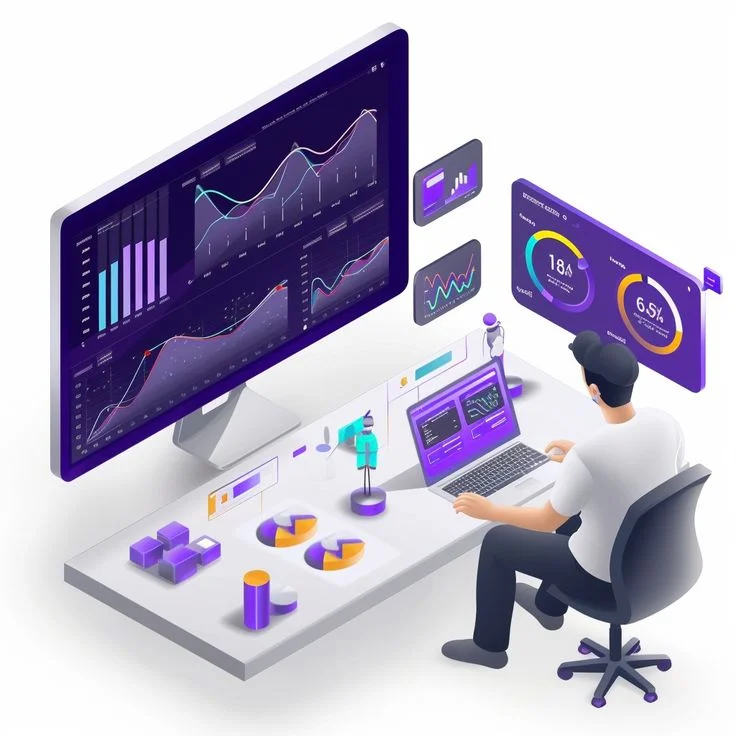Understanding Shopify EDI Integration & How It Works

Forget boring data entry and manual order processing! For businesses that use Shopify to build their stores, integrating Electronic Data Interchange (EDI) can streamline operations, reduce errors, and improve communication with suppliers, customers, and partners. This guide delves into Shopify EDI integration, a powerful tool for streamlining business operations.
Here, we’ll explore:
- What EDI is and how it works with Shopify
- A step-by-step process for integrating EDI with Shopify applications
- Top EDI apps seamlessly integrate with Shopify
- Answers to frequently asked questions about Shopify EDI
By the end of this in-depth guide, you will have the knowledge to determine if integrating Shopify with an EDI system is the key to unlocking greater efficiency in your business.

Shopify EDI Integration: A Growing Trend
-
Market Growth: The global EDI software market size is projected to grow from $1.98 billion in 2023 to $4.52 billion by 2030, exhibiting a CAGR of 12.5% during the forecast period, according to Fortune Business Insights.
-
Order-to-Cash Improvement: According to DCS, order-to-cash cycles can be reduced by as much as 50% when EDI is implemented. This acceleration minimizes labor costs and maximizes customer satisfaction
Why You Need EDI for Shopify
EDI, which stands for Electronic Data Interchange, facilitates the automated sharing of business documents between companies in a standardized electronic format. Integrating with Shopify revolutionizes how you interact with suppliers, distributors, and logistics partners.

Key benefits of EDI for Shopify include:
-
Increased accuracy: Errors are common in manual data entry, potentially resulting in inaccurate orders, late shipments, and unhappy customers. EDI ensures that data is exchanged accurately and consistently between Shopify and your trading partners.
-
Faster Transaction Cycles: With EDI, transactions happen quickly. Orders are processed, invoices are generated, and shipping notifications are sent without delay. This speed translates to better customer experiences.
-
Scaling Your Business: As your Shopify store grows, managing more transactions manually becomes impractical. EDI integration enables your store to handle increased volumes of orders and data without the need to hire additional staff
-
Enhanced Supplier Collaboration: EDI fosters seamless communication with suppliers, manufacturers, and logistics providers. It enables efficient collaboration, leading to better supply chain management.
How EDI Works in Shopify

Traditionally, business transactions like purchase orders, invoices, and shipping notices would be handled manually or via email. This process was often prone to errors, delays, and miscommunications due to the reliance on human intervention and the potential for information to be lost or misinterpreted during transmission.
In contrast, EDI automates this process, allowing businesses to exchange information quickly, accurately, and efficiently, streamlining operations, reducing costs, and improving overall productivity. Several EDI documents are commonly used in Shopify to facilitate smooth business processes:
- Import Inventory: Automatically import product data, including descriptions, images, and pricing, directly from supplier catalogs.
- Build Product Catalogues: Create and maintain accurate product catalogues by synchronizing data between Shopify and supplier systems.
- Automate Product Tracking: Track product movement throughout the supply chain, from purchase to sale, with real-time updates.
-
Integrate Various Apps: Connect EDI with other Shopify apps, such as accounting software, shipping carriers, and warehouse management systems, for a comprehensive solution and to boost your online store.
- Receive Invoices: Receive electronic invoices from suppliers, accurately reflecting product costs and payment terms.
- Receive Advance Ship Notices (ASNs): Receive notifications from suppliers about upcoming shipments, including product details and expected arrival times.
- Send Shipping Notifications: Send shipping information to customers and logistics providers, including tracking numbers and delivery dates.
- Exchange Order Status Updates: Exchange order status information between Shopify and suppliers or fulfillment centers.
Key Steps for Integrating Applications with Shopify Using EDI
1, Assess Your EDI Needs
- Identify EDI Documents: Determine which EDI documents are essential for your business (e.g., purchase orders, invoices, shipping notices).
- Define Data Requirements: Specify the data fields and formats for seamless integration.
- Evaluate Trading Partners: Identify which suppliers or customers require EDI communication.
2, Choose an EDI Solution
- Select an EDI Provider: Research and select an EDI provider that aligns with your business needs and budget.
- Consider Integration Options: Evaluate cloud-based, on-premise, or hybrid EDI solutions.
- Evaluate Compatibility: Ensure the chosen EDI solution is compatible with Shopify and your trading partners’ systems.
3, Map Data and Set Up Connections
- Data Mapping: Establish a clear mapping between Shopify data fields and EDI document standards (e.g., ANSI X12, EDIFACT).
- Configure Connections: Set up secure connections between Shopify, your EDI provider, and trading partners.
- Test Data Exchange: Conduct thorough testing to ensure accurate and reliable data transfer.
4, Implement and Monitor
- Go Live: Launch the EDI integration after successful testing.
- Monitor Performance: Continuously track data exchange, identify issues, and make necessary adjustments.
- Provide Training: Educate employees on EDI processes and troubleshooting procedures.
Best Practices For Integrating Shopify With Edi
To maximize the benefits of Shopify EDI integration, consider these best practices:
- Understand Your Business Needs: Before diving into integration, assess your specific requirements. Consider factors like order volume, trading partners, and document types. Knowing your needs will guide your integration strategy.
- Choose a Reputable EDI Provider: Select an EDI provider that specializes in Shopify integration. Look for reliability, scalability, and compatibility with your business processes.
- Configure EDI Connections: Set up connections between your Shopify store and trading partners. Configure communication protocols, data formats, and document mappings. Ensure seamless data exchange.
- Map Data Fields: Define mappings between Shopify and EDI systems. Map product codes, pricing information, shipping details, and other relevant data. Accuracy is crucial here.
- Test Thoroughly: Conduct rigorous testing before going live. Validate data accuracy, document exchange, and system functionality. Address any issues promptly.
- Train Your Team: Provide training on handling orders, invoices, and other EDI-related tasks.
- Monitor and Optimize: Regularly monitor your integration. Address any performance bottlenecks or errors promptly. Optimize processes for efficiency.
Top EDI Apps That Work Seamlessly with Shopify
1, Cin7 Omni
Cin7 Omni brings together your products, sales channels, stock locations, orders, warehouses, workflows, and reports into a single automated solution. It facilitates effective order management and improves inventory tracking, providing a connected source of truth for your entire business.
Key Features of Cin7 Omni:
- E-commerce and Marketplace Integration: Easily scale your business by spinning up new online, wholesale, and retail channels with extensive integrations.
- Contract Manufacturing Support: Manage complex production BOMs, schedule resource capacity, and streamline supply chain management.
- Flexible Configuration: Customize your workflows and processes to match your unique business needs.
- Customizable Quotes: Create tailored quotes for customers.
- Multi-Entity Support: Manage multiple business entities seamlessly.
Additional features include real-time inventory tracking, automated purchasing workflows, integrated CRM and accounting, and robust reporting.
Pricing: Cin7 Omni’s paid version starts at $349 USD/month.
2, TrueCommerce
TrueCommerce simplifies the way businesses connect and transact with their trading partners. It provides top-notch electronic data interchange (EDI) solutions and more, giving access to a fully integrated, worldwide supply chain network.
Key Features:
- Multi-Channel Integration: Connect across the entire supply chain—from EDI to inventory management, fulfillment, digital storefronts, and marketplaces.
- Automated Order Management: Capture and manage orders from various sales channels, eliminating manual entry and ensuring data accuracy.
- Supplier Management: Use an integrated portal, performance analytics, and managed services to manage suppliers efficiently.
- Compliance and Automation: Trade with over 180,000 pre-connected businesses, ensuring compliance with trading partners.
- E-invoicing: Ensure tax-compliant E-invoicing across multiple countries with a scalable global solution.
- ERP Integrations: Effortlessly incorporate EDI transactions into ERP systems to see your real-time supply chain.
Pricing: Paid version starts at $19.95/month.
3, SPS Commerce
SPS Commerce offers a full-service EDI app available on the Shopify App Store. It simplifies EDI compliance for Shopify suppliers by providing all the necessary network services and support.
Key Features:
- Order Management: Efficiently manage orders and track their status.
- Invoice Management: Handle invoices seamlessly.
- Search Functionality: Easily find relevant information.
- Integration: SPS Commerce integrates with various third-party systems, including Oracle NetSuite, Microsoft Dynamics, QuickBooks, SAP, Shopify, Sage 50Cloud, and more.
Pricing: Starts at $20.00/month.
4, Cleo Integration Cloud
Cleo Integration Cloud is a robust EDI platform that provides seamless integration with Shopify. It offers real-time data synchronization, enabling businesses to automate and streamline their EDI transactions with trading partners.
Key features:
- Data Transformations: Convert data from source systems to destination formats.
- Breadth of Connectors: Supports various connectors (SaaS, Enterprise, Big Data, Mainframe, file-based systems).
- End-to-End Back-Office Integration: Integrate with ERP, TMS, WMS, and other systems.
- Real-Time Business Insights: Configurable dashboards and alerts for insights across B2B transactions.
- eCommerce & Marketplace Integration: Power direct-to-consumer experiences.
Pricing: The starting price is $2,000.
5, Boomi
Boomi is a platform that makes it easy for businesses of all sizes to connect applications, data, and processes. It is cloud-based and helps simplify integration across different parts of a business.
Key features:
- Integration: Connect applications across hybrid IT landscapes with ease. Subscription-based pricing is based on features and connectors needed.
- Master Data Hub: Build a centralized hub for synchronized, accurate data. Pricing depends on the number of golden records maintained.
- B2B/EDI Management: Exchange and process transactions with business partners. Pricing varies based on the trading partners connected.
- API Management: Centrally create, publish, and manage APIs and web services. Pricing is based on API call volume.
- Flow: Quickly build automated workflows and applications using low-code development. Pricing depends on the number of applications built.
- Data Catalog & Preparation: Discover, catalog, and prepare known and unknown data for effective decision-making.
Pricing: Free trial is available.
FAQs
Q1: Can I use EDI with my existing Shopify store, or do I need to set up a new store?
A1: EDI can be integrated with your existing Shopify store. There’s no need to set up a new store. You can choose an EDI solution that integrates with your current Shopify setup.
Q2: How much does it cost to integrate EDI with Shopify?
A2: The cost of EDI integration with Shopify varies depending on the EDI solution you choose. Some EDI apps offer subscription-based pricing, while others charge based on transaction volume or the number of trading partners.
Q3: What if I encounter issues with EDI integration?
A3: Most companies that provide EDI services offer help to troubleshoot and fix problems. It’s essential to clearly understand the support options available before implementing EDI.
Q4: Do I need any specific EDI documents for Shopify integration?
A4: The specific EDI documents you need depend on your business requirements and trading partners. Standard EDI documents for Shopify integration include purchase orders (EDI 850), invoices (EDI 810), and shipping notices (EDI 856).
Conclusion
By harnessing the power of EDI, Shopify merchants can revolutionize their operations. Some benefits are automating data exchange, reducing manual errors, and improving efficiency. By choosing an EDI provider thoughtfully and adhering to the instructions in this manual, you can unleash the complete potential of your Shopify store.
Remember, EDI is not just about technology; it’s about streamlining processes and enhancing your business. Start your EDI journey today and experience its transformative impact on your operations.





![Top 20+ Must-have Shopify Apps for 2025 [Free & Paid] - Mageplaza](https://cdn2.mageplaza.com/media/blog/must-have-shopify-apps/top-must-have-shopify-apps.png)
![[2025 Updates] Top 10+ Upsell Apps for Shopify - Mageplaza](https://cdn2.mageplaza.com/media/blog/best-upsell-shopify-app/cover.png)